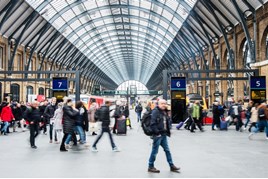More than 70% of the rail industry’s £13.5 billion income in 2014-2015 came from passengers. This has increased by 5%, with passengers now supplying £8.8bn of the funding.
That proportion (71%) was supplemented by 26% of the funding from Government. Property provided 3%.
Figures released by the Office of Rail and Road on March 11 reveal that after adjusting for payments within the industry, the overall cost of running the railway was £13.6bn - with 54% of these costs incurred on train operations and 46% on rail infrastructure.
ORR said the increase in passenger contribution is primarily through a 4% increase in the number of passenger journeys made, and because of 1% fare increases in real terms. It said most of these were in London and the South East. Total fare income was 62% unregulated fares and 38% regulated fares.
Government funding reduced by 9%, from £3.9bn to £3.5bn. ORR said this included funding from all government sources including devolved administrations and Passenger Transport Executives. After adjustments for the finance costs paid by Network Rail to the DfT, government funding has reduced by 14% to £3.1bn.
- For more on this, read RAIL 797, published on March 30.
















Login to comment
Comments
No comments have been made yet.